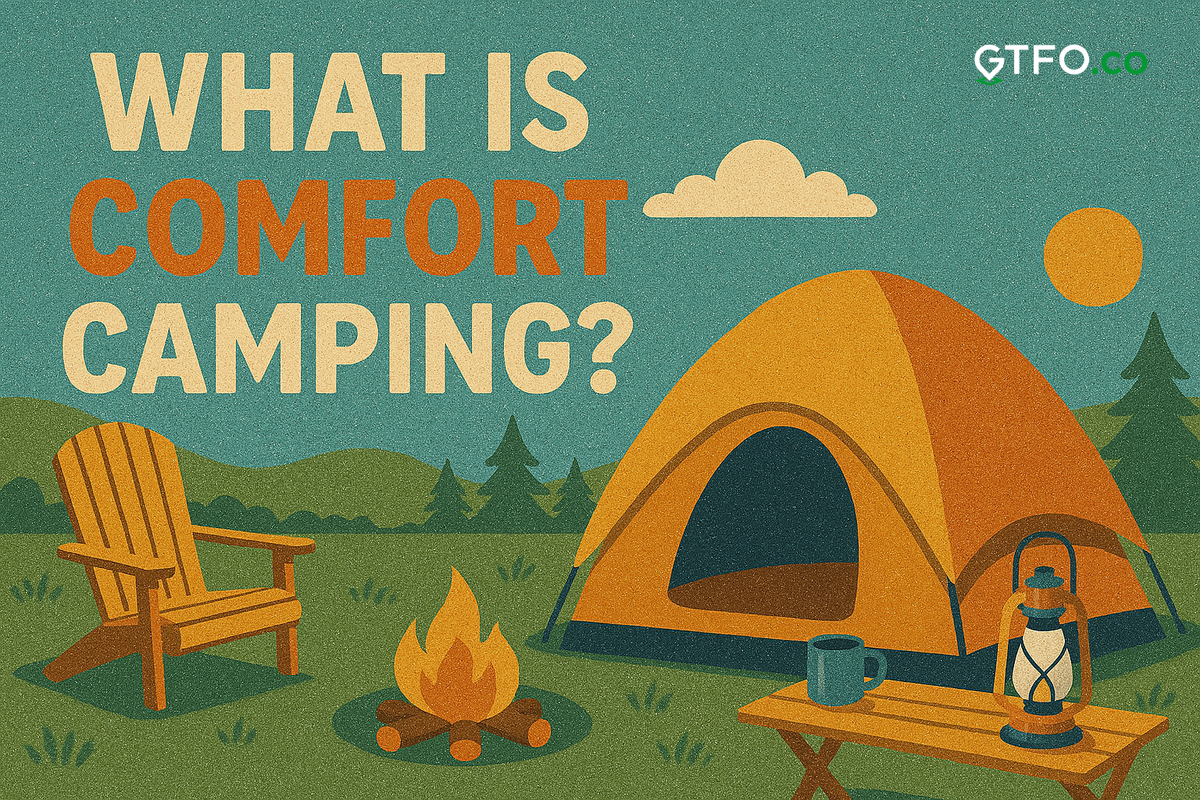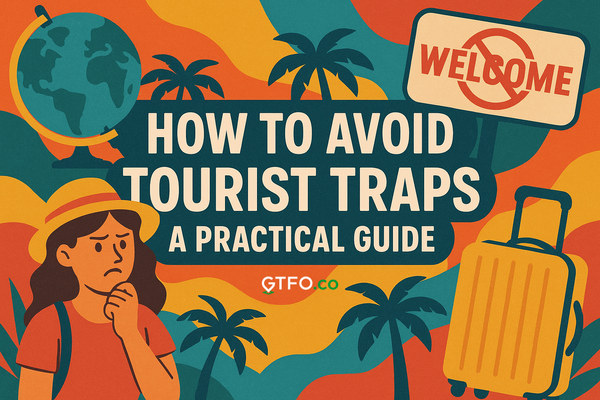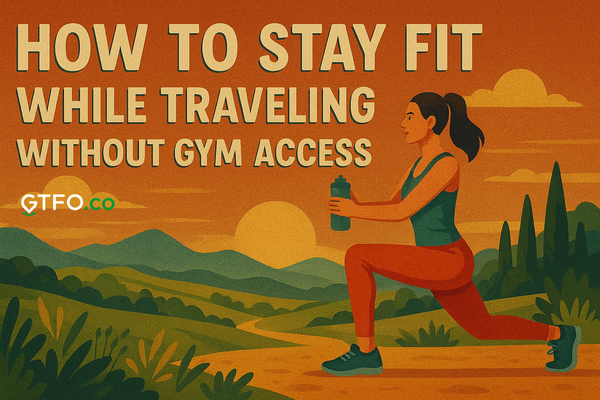What Is Comfort Camping? How to Make Camping More Comfortable Without Going Full Glamp

Comfort camping is about making smart upgrades to your setup so you can actually rest, eat well, and stay warm, without giving up the core camping experience. It’s not glamping, it’s not luxury, it’s just a better way to rough it. Here's how to do it right.
Key Takeaways
- Comfort camping improves on the basics: better sleep, better meals, and fewer “I wish I’d packed…” moments.
- It's not glamping—you're still outdoors, still in a tent, still cooking for yourself.
- Small upgrades in gear, shelter, and prep make a huge difference in how your trip feels.
- Ideal for couples, first-timers, or anyone looking to camp without sacrificing rest.
So, What Is Comfort Camping?
Comfort camping is traditional camping—but with a little more thought put into sleep, shelter, and food. It’s not about ditching tents for luxury yurts. It’s about making basic upgrades so you’re not tossing and turning all night, shivering in a hoodie, or eating cold canned soup.
Think of it as the middle ground between the bare-bones no-frills camping essentials and full-on glamping. You’re still connected to the outdoors. You’re still roughing it, just… less roughly.

Comfort Camping vs. Glamping vs. Regular Camping
Not sure where comfort camping fits? Here’s the breakdown:
| Style | Sleeping In | Cooking On | Gear Level |
|---|---|---|---|
| Camping | Tent, sleeping bag | Campfire or backpack stove | Basic essentials |
| Comfort Camping | Tent + real pad or mattress | Full camp kitchen | Mid-tier gear |
| Glamping | Cabin or safari tent | Often catered or private grill | Provided for you |
We broke it down more in our Camping vs. Glamping post if you want to see where you land.
Why Comfort Camping Makes a Difference
Even the most hardcore outdoor lovers will tell you—when you're cold, hungry, and sleep-deprived, it's hard to enjoy the views. Comfort camping helps eliminate the biggest friction points without overcomplicating things.
You’re still carrying your own stuff. Still making your own coffee. Still watching the fire crackle under real stars. You’re just also warm, rested, and not eating granola bars for dinner.
How to Make Camping More Comfortable: The Essentials
Here’s where comfort makes the biggest impact.

1. Sleep Like You’re at Home (Or Close)
Forget thin mats and balled-up hoodies as pillows. Invest in:
- A real sleeping pad or even a car camping mattress
- A sleeping bag that’s actually rated for overnight temps
- A camping pillow (or your favorite from home)
- A tent that lets you sit up, change clothes, and move around
Tip: If you're car camping, there’s no reason not to throw in an extra blanket or foam topper.
2. Stay Warm—Even in Summer
Nighttime temps can drop fast, even in warm places. Layer smart:
- Thermal base layers for sleeping
- A beanie and socks
- A fleece or down blanket on top of your sleeping bag
Bonus move: Fill a metal water bottle with hot water before bed and toss it in your sleeping bag. It’ll warm you up and stay cozy most of the night.

3. Eat Real Meals (Without Becoming a Camp Chef)
A big part of comfort is food. Skip the freeze-dried pouches and prep a few low-fuss camping meals.
- Bring a two-burner stove if you have space
- Pack a skillet, cutting board, and basic seasonings
- Cook one-pot meals: pasta, chili, stir fry, quesadillas
- Don’t forget real coffee gear (French press, pour-over, or AeroPress)
Comfort camping is all about enjoying your food, not just surviving on it.

4. Create Your Own Shelter Zone
Beyond your tent, having a space to relax, cook, or hang out matters.
- Pop-up canopy or tarp = shade and rain cover
- Folding chairs you’ll actually want to sit in
- A mat or tarp outside the tent for dirty shoes
- Lanterns or string lights for softer evening light
Make it feel like your little home base, not just a place to crash.

5. Keep Clean (Enough)
You don’t need a shower, but you do want to feel human.
- Body wipes, a washcloth, or a small jug for rinsing off
- Toothbrush kit, quick-dry towel, clean socks and underwear
- Trash bags and ziplocks to keep things dry and organized
It doesn’t take much—just a little daily reset so you’re not covered in grime.

6. Choose the Right Campsite
This part matters more than people think. Pick your spot carefully.
Look for:
- Flat ground (no rocks or slopes)
- Tree coverage for shade
- Water source or views nearby
- Quiet distance from busy bathrooms or group sites
If you’re new to camping, check out our no-nonsense trip planning guide to help pick a good spot.
7. Bring a Few Comfort Extras
You don’t need to overpack, but a couple items go a long way:
- A Bluetooth speaker for quiet background music
- Hammock for naps or reading
- Books, games, or cards for slow moments
- Power bank to keep your phone charged (for maps, photos, etc.)
Comfort camping doesn’t mean turning nature into your living room—it means giving yourself space to rest and enjoy it more.
When Comfort Camping Makes Sense
This kind of setup works especially well for:
- Couples who want quiet weekends outside without sacrificing sleep
(also see: low-budget vacation ideas for couples) - First-time campers easing in before committing to backcountry
- Cold-weather trips where gear matters more
- Road trippers who camp as they go (check out our road trip questions list if you want to add better conversation to the drive)
Bottom Line
Comfort camping is about tweaking the essentials so you want to camp again. It’s not about turning the woods into a hotel—it’s about setting yourself up to rest, stay warm, and actually enjoy your time outdoors.
If you’re planning your first trip, upgrading your usual setup, or just looking to avoid the mistakes of your last outing, comfort camping is a solid middle ground. Not glamping. Not bare-bones. Just better.
Common Questions
Q: Is comfort camping expensive?
Not necessarily. You can level up gradually—start with a decent sleeping pad and stove, then add extras as you go.
Q: Can I still comfort camp if I’m backpacking?
It’s tougher, since you have to carry everything. Comfort camping is best for car camping or short hikes in.
Q: Does this mean I’m not “really” camping?
Not at all. You’re still outside. Still in a tent. Still cooking your meals and sleeping under the stars. You’re just doing it in a way that doesn’t destroy your back or appetite.
Want more realistic, zero-BS travel and outdoors advice? Hit up GTFO.co for trip ideas, gear breakdowns, and packing lists that cut the fluff.





